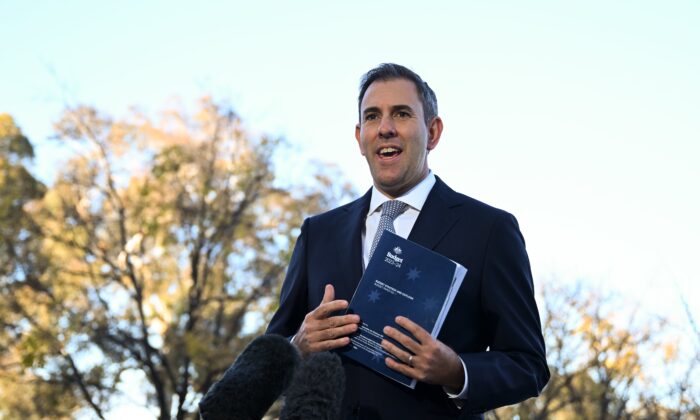The opposition, however, contends that the budget ‘does nothing to help Australians get ahead and to restore their standard of living.’
Energy bill relief, tax cuts for every taxpayer, a cap on medicine prices, and support for renters are among the Labor government’s initiatives to alleviate cost-of-living pressures.
The federal budget, unveiled on May 14, includes $3.5 billion (US$2.25 billion) in new energy bill relief, with every Australian household set to receive an energy rebate of $300 (US$198) and one million small businesses receiving a $325 rebate.
The cornerstone of the budget is the introduction of new tax cuts averaging $36 (US$23.81) per week for all 13.6 million taxpayers, which will start flowing in less than seven weeks. The average benefit per taxpayer would be $1,888 annually.
For a family with a combined income of around $130,000, their combined tax cut will amount to over $2,600 annually or approximately $50 per week.
Moreover, the Labor government plans to extend eligibility for the higher rate of JobSeeker payments to individuals with a partial capacity to work up to 14 hours per week.
Additionally, the government will freeze the maximum cost of prescriptions under the Pharmaceutical Benefits Scheme for five years, ensuring that in 2024-25, “no one will pay more than $31.60,” according to Treasurer Jim Chalmers.
The budget also includes $3 billion in funding towards cheaper medicines and the community pharmacies that dispense them, along with cost caps of $7.70 for pensioners and concession holders over the next five years.
Renters will see further relief, with those on rent assistance receiving an additional $19 per fortnight. The government will allocate an extra $1.9 billion to boost the maximum rates of Commonwealth Rent Assistance by another 10 percent, following the 15 percent increase implemented in the previous budget.
This marks the first time in over three decades that there have been consecutive increases in rent assistance.
Moreover, the government will erase $3 billion in student debt and impose a cap on the indexation of student loans based on either the Consumer Price Index or the Wage Price Index, whichever is lower.
Furthermore, the budget allocates $6.2 billion to address local infrastructure bottlenecks, provide more student housing, and fund additional social and affordable housing.
The Treasurer emphasized that the budget aims to alleviate the financial burden on Australians facing economic challenges and directly reduce inflation amid global economic uncertainties.
However, the Shadow Treasurer criticized the budget for failing to address the cost of living crisis and accused the government of prioritizing the wrong issues during tough times for Australians.
The Business Council of Australia praised the budget for taking positive steps to enhance competitiveness, while the Australian Chamber of Commerce and Industry raised concerns about the long-term implications of the spending plans on inflation. Please rewrite this sentence.
Source link





